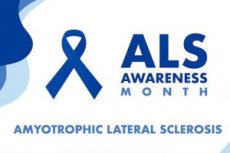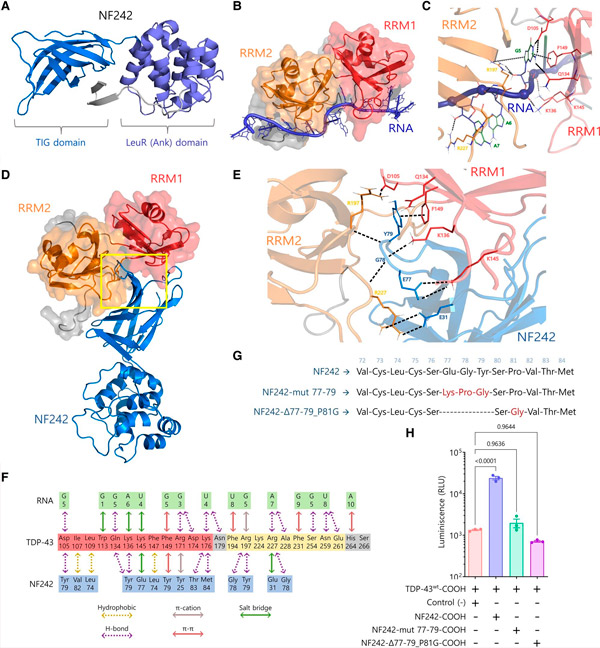New publications
Study reveals protein interactions as potential pathway to cure ALS
Last reviewed: 02.07.2025

All iLive content is medically reviewed or fact checked to ensure as much factual accuracy as possible.
We have strict sourcing guidelines and only link to reputable media sites, academic research institutions and, whenever possible, medically peer reviewed studies. Note that the numbers in parentheses ([1], [2], etc.) are clickable links to these studies.
If you feel that any of our content is inaccurate, out-of-date, or otherwise questionable, please select it and press Ctrl + Enter.

In Canada, thanks to philanthropy, a team of researchers from the University of Western Ontario led by Dr. Michael Strong has discovered a potential cure for amyotrophic lateral sclerosis (ALS).
The study, which illustrates how protein interactions can preserve or prevent the nerve cell death that is the hallmark of ALS, is the culmination of decades of research supported by the Temerty Foundation.
“As a physician, it’s really important to me to be able to say to a patient or a family, ‘We’re trying to stop this disease,’” said Strong, a clinician-scientist who has dedicated his career to finding a cure for ALS. “It’s taken 30 years of work to get here; 30 years of caring for families and patients and their loved ones when all we had was hope. That gives us reason to believe that we’ve found a cure.”
ALS, also known as Lou Gehrig's disease, is a debilitating neurodegenerative disorder that progressively disrupts the nerve cells responsible for muscle control, leading to muscle wasting, paralysis, and eventually death. The average life expectancy for an ALS patient after diagnosis is only two to five years.
In a study published in the journal Brain, Strong's team found that targeting the interaction between two proteins present in nerve cells affected by ALS can stop or reverse the progression of the disease. The team also identified the mechanism that makes this possible.
“Importantly, this interaction may be key to developing treatments not only for ALS but also for other related neurological conditions, such as frontotemporal dementia,” said Strong, who holds the Arthur J. Hudson Professorship in ALS Research at Western University’s Schulich School of Medicine and Dentistry. “This is a game changer.”
In nearly all ALS patients, a protein called TDP-43 is responsible for the formation of abnormal clumps inside cells, causing them to die. In recent years, Strong's team has discovered a second protein, called RGNEF, that functions in opposition to TDP-43.
The team’s latest breakthrough identified a specific fragment of this RGNEF protein, called NF242, that can mitigate the toxic effects of the ALS-causing protein. The researchers found that when the two proteins interact with each other, the toxicity of the ALS-causing protein is eliminated, significantly reducing damage to nerve cells and preventing their death.

Modeling of TDP-43-NF242 interaction. Source: Brain (2024). DOI: 10.1093/brain/awae078
In experiments on fruit flies, this approach significantly increased lifespan, improved motor function, and protected nerve cells from degeneration. Similarly, in mouse models, the approach led to increased lifespan and mobility, as well as reduced markers of neuroinflammation.
The path to the team's discovery was paved by the Temerty family's long-term investment in ALS research at Western University—support that Strong calls "truly transformative."
Now Strong and his team have set a goal of bringing their potential treatment into human clinical trials within five years, thanks to a new donation from the Temerty Foundation.
The fund, founded by James Temerty, founder of Northland Power Inc., and Louise Arcand Temerty, is investing $10 million over five years to support the next steps in bringing this treatment to ALS patients.

Dr. Michael Strong, who holds the Arthur J. Hudson Chair in ALS Research at the Schulich School of Medicine and Dentistry at Western University, has discovered a protein that could lead to a cure for ALS. Credit: Allan Lewis / Schulich School of Medicine and Dentistry
“Finding an effective treatment for ALS would mean so much to people living with this terrible disease and their loved ones,” said James Temerty. “Western University is pushing the boundaries of knowledge about ALS, and we are excited to contribute to the next phase of this breakthrough research.”
The Temerty Foundation's new donation brings the family's total investment in neurodegenerative disease research at Western University to $18 million.
“Dr. Strong’s tireless dedication to his cause is matched by the Temerty family’s deep desire to make a difference for the thousands of people around the world who have been diagnosed with this devastating disease,” said Western University President Alan Shepard. “The Temerty Foundation’s investment and vision have accelerated progress in finding an effective treatment for ALS. We are grateful for the Temerty family’s commitment to life-changing research.”
"This is a turning point in ALS research that has the potential to truly change patients' lives," said Dr. John Yu, dean of the Schulich School of Medicine and Dentistry.
“Thanks to Dr. Strong’s leadership, our continued investment in the best tools and technology, and the support of the Temerty Foundation, we are excited to announce a new era of hope for ALS patients.”
The results of the work are described in detail in an article published in the journal Brain.
